All over southern Maine, long-awaited fiddleheads are starting to turn up on restaurant menus, in local markets and at roadside stands.
Their appearance is as sure a sign of spring as greening lawns and daffodils bobbing their yellow heads in the breeze.
Fiddleheads are the coiled fronds of the ostrich fern that typically grow on the flood plains of Maine rivers. Their delicate tendrils, covered in papery brown scales, begin emerging from the soil in April. mid-May, the fleeting season is over, except for far northern Maine.
This year, the unusually warm weather has tinkered with the fiddlehead season a bit.
“We’re a couple of weeks ahead of schedule up here,” says David Fuller, a fiddlehead researcher at the University of Maine Cooperative Extension in Farmington.
In southern Maine, chefs are capturing the essence of the season in the subtle earthy taste and tender-crisp texture of the fiddlehead, often coupling it with the garlicky goodness of spring ramps.
Home cooks are scooping up fiddleheads at places like the Rosemont Markets in Portland and Yarmouth. Whole Foods Market in Portland hopes to have them in this week, and the Jordan Farm in Cape Elizabeth expects to be selling them when the farm store opens on May 5.
Roadside stands are popping up in southern Maine towns such as Wells and communities around Sebago Lake, selling the New England delicacies for $2 to $4 a pound.
Once cleaned of their brown covering, fiddleheads are simple to prepare and versatile. They turn up in salads, appetizers, soups and risottos on local menus. They are sauteed in butter, flavored with a little lemon and maybe some shallots, and served with fish. And they can be pickled so they will stretch all through the summer.
“Mainers mostly have theirs with butter and a little vinegar,” said Angelo D’Ambrosio of Elliottsville Township, a fiddlehead fan who started a Facebook page where people are sharing recipes and tips on where to find the plants. “They’ll have them with some brook trout.”
At Evangeline last week, Chef Erik Desjarlais created a soupe de printemps that featured fiddleheads, carrots, fennel, celery branch and La Quercia ham swimming in a crystal-clear vegetable consomme. It tasted like spring in a bowl.
He’s also done a fiddlehead risotto, and is challenging himself to offer something new almost every day during fiddlehead season. Under consideration are fiddlehead poppers — nuggets of fiddleheads wrapped in ham and fried — and maybe something with wild escargot freshly arrived from France.
“The ideal thing is when the morels come at the same time, and you can do morels and fiddleheads and ramps on the same plate with a little bit of brown butter, a little bit of bacon,” Desjarlais said. “I mean, that’s it right there. You don’t need much else.”
At On the Marsh Bistro in Kennebunk, Executive Chef Jeffrey Savage is making a Spring Peekytoe Crab Bake appetizer with morels, fiddleheads, ramps and seminola pudding. He serves the dish bubbling hot from the oven with housemade crostini.
Fiddleheads, says Savage, are “almost too simple to work with.”
“The best way to serve some types of food is the simplest,” he said.
Savage likes serving them as a side dish, sauteed with a little garlic, white wine, butter and red pepper flakes “so you can really appreciate what it is for itself. It needs salt. It needs pepper. It needs a little flavor, a little attention, but it doesn’t need much.”
Fresh fiddleheads are a great source of fiber, Vitamin A and (at least until they’re cooked), Vitamin C. Many people say they taste a little like asparagus.
“I don’t think it tastes like asparagus as much as the texture and color is like asparagus,” Savage said. “I think the flavor is actually closer to spinach.”
Justin Rowe, the new executive chef at the Chebeague Island Inn, thinks they have more of a nutty quality.
“Everybody says asparagus,” Rowe said. “I think the only thing that they have in common with asparagus is they have that crunch. But to me, sauteeing just lightly brings out somewhat of a nutty quality they’re great sauteed with just a little bit of garlic. They’re great with mushrooms as well.”
Desjarlais has heard the flavor of fiddleheads compared to cut grass, but he thinks people are simply trying to describe that natural earthiness that comes from the landscape in which they grow.
“They’re usually in a river bank area, so you’re going to have the musty thing happening,” Desjarlais said. “A little bitter, (but) bitter in a good way. Depending on how mature they are, they’re going to be sweeter when they’re smaller.”
No matter how you describe it, it is the taste of spring.
Staff Writer Meredith Goad can be contacted at 791-6332 or at: mgoad@pressherald.com
Send questions/comments to the editors.



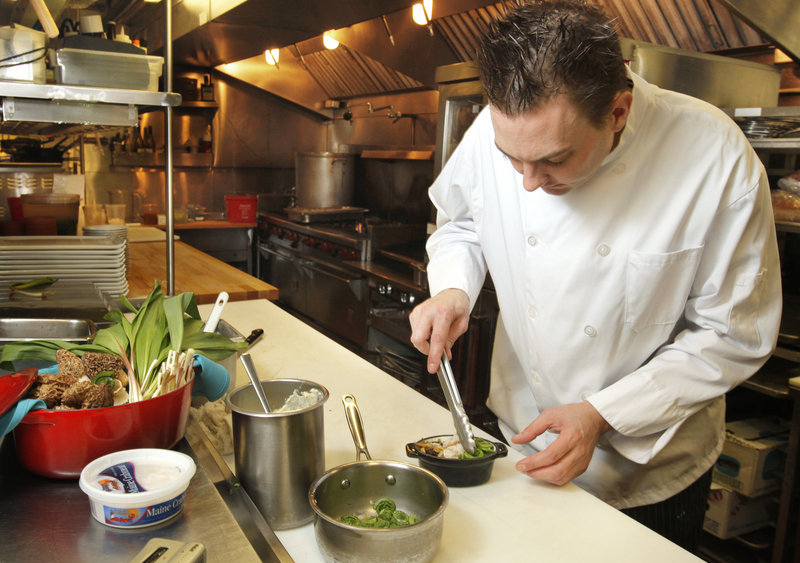
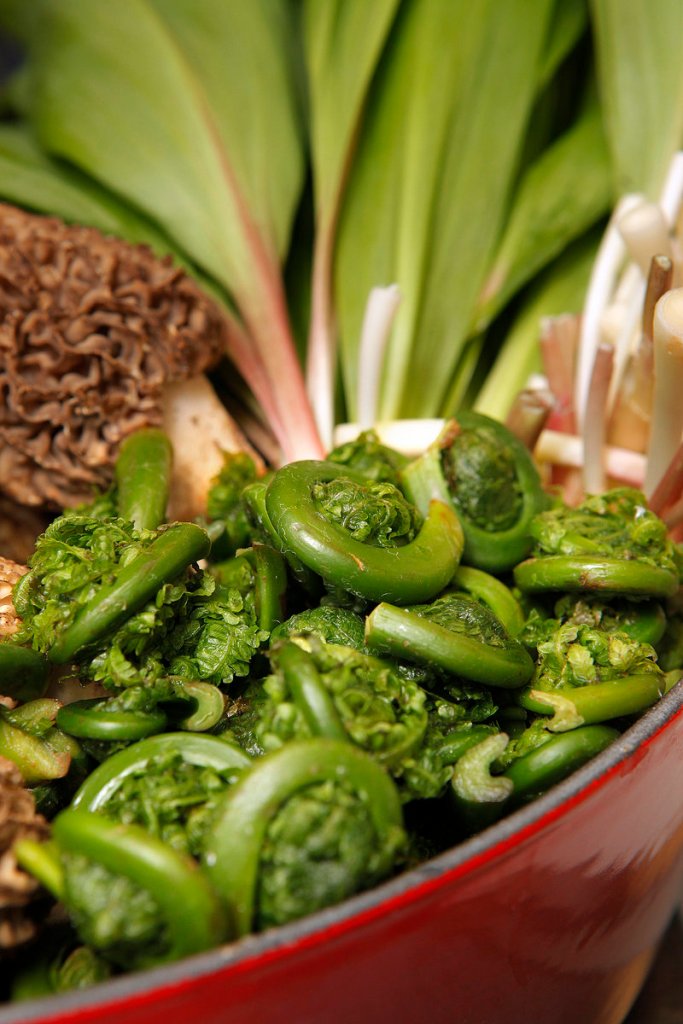
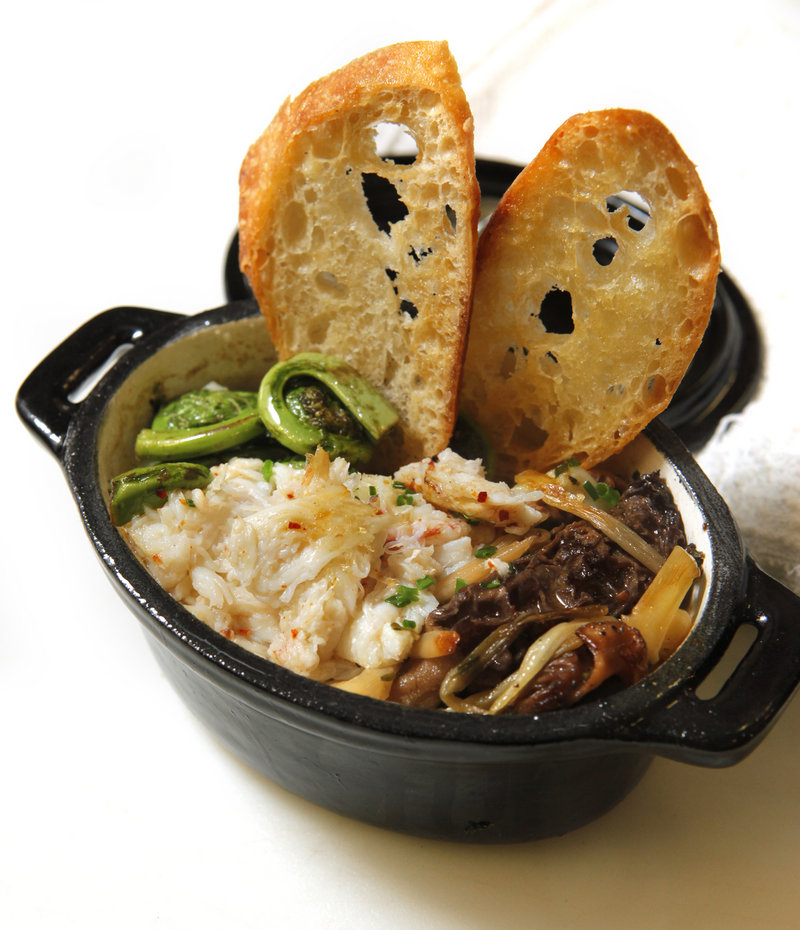

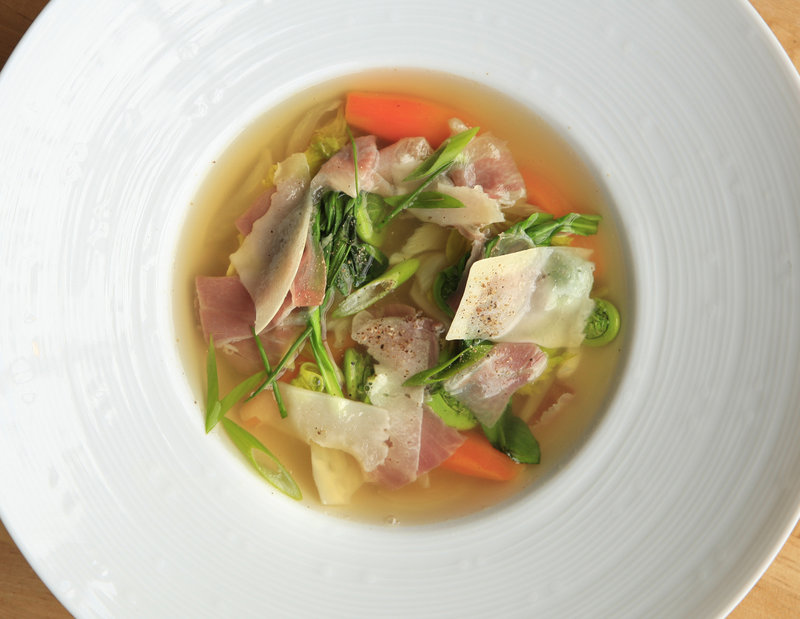
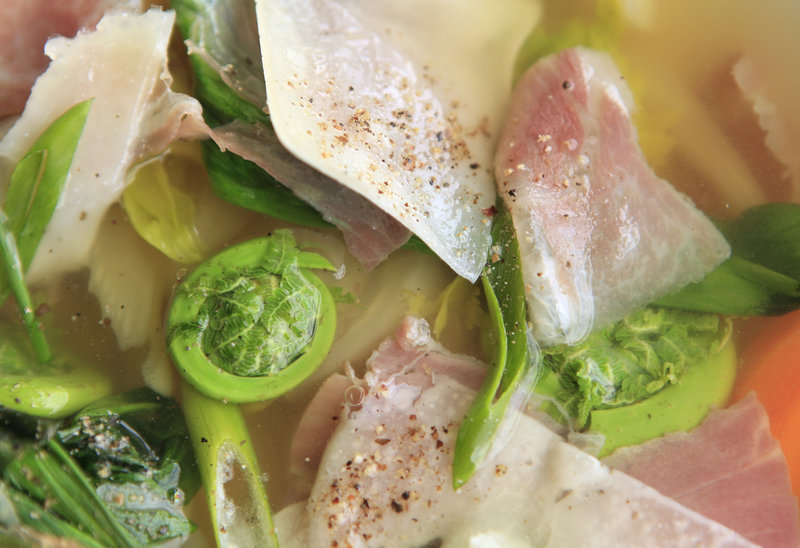

Success. Please wait for the page to reload. If the page does not reload within 5 seconds, please refresh the page.
Enter your email and password to access comments.
Hi, to comment on stories you must . This profile is in addition to your subscription and website login.
Already have a commenting profile? .
Invalid username/password.
Please check your email to confirm and complete your registration.
Only subscribers are eligible to post comments. Please subscribe or login first for digital access. Here’s why.
Use the form below to reset your password. When you've submitted your account email, we will send an email with a reset code.